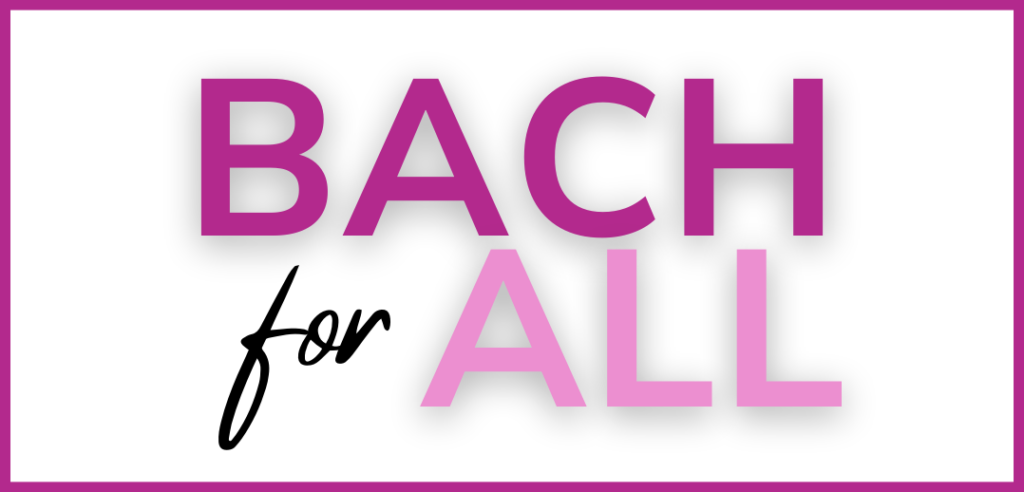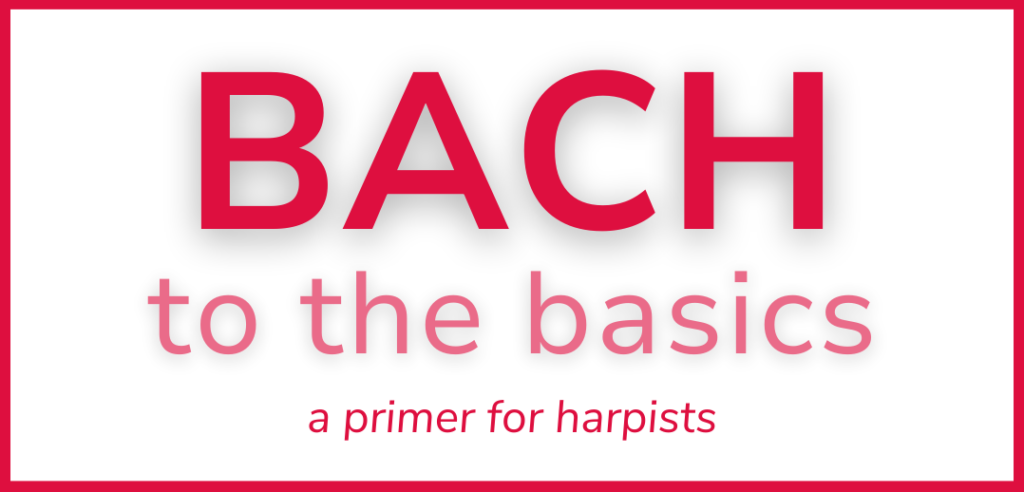Here’s the challenge: for 20 minutes a day, focus your practicing only on your technique at the harp. Sounds simple, right? Try doing it for 30 days in a row. Now it’s not quite as simple, is it? In January, we invited harpists in our online community to give this month of technique a shot—we called it our 30 Day Practice Challenge. Over 600 harpists—from beginners to professionals—accepted the challenge. For the next month, we worked on hand position, articulation, scales, chords, sound production, and much more. At the end of the month, 84 harpists had completed the challenge and hundreds more had improved their playing and their practice habits by participating.
Article Extra: Practice Tips
If you’re in a repetition rut, we’ve got some tips to help you re-energize your practice sessions and get the most out of your time on the bench.
We set out to create a sort of “technique boot camp” where harpists act as their own drill sergeant, taking dedicated time each day to dig into the fundamentals of playing. Judging from the feedback we received from those who took the challenge, this dedicated daily dose of technique hit the spot for harpists whose practice time tends to be dominated by learning notes for the next lesson or recital or gig. But don’t take our word for it, listen to what some participants had to say:
“I have really been enjoying this challenge. As a professional harpist who has not had a lesson since college many years ago, it has been so helpful to try and improve my playing one day and aspect at a time. Sometimes it’s so tempting to practice on auto pilot and not think about each finger, each movement, etc.” —Joan S.
“As an adult student, I have benefited from the daily focus areas and past date articles. It’s like having an extra tutor to focus on details in between lessons.” Robyn B.
“I have made more progress, learned and re-learned more, and seen more results doing this than any other challenge I’ve ever taken part in. And that doesn’t even take into account the joy experienced while playing my harp, even while focusing on technique.” —PHS
Who knew practicing technique could be so fun? Lucky for you, we’ve made sure you don’t have to miss out on all the fun if you didn’t do our challenge in January. We’ve organized the best material from the online challenge here in print form so you take or retake the challenge anytime, anywhere.
Day 1—Hand Position (part 1)
Are you paying attention to all the elements that create a stable hand position—the foundation for everything you do at the harp? Is your hand position something that you’ve carefully cultivated or left to random chance?
Suggested goal: Spend time today analyzing your hand position. Pick a very easy etude—or just play each finger one at a time—and play slowly! Ask yourself if your hand position is helping you achieve the end result you want. If not, how can you improve it?
Day 2—Hand Position (part 2)
How do you bring your hands to the harp? Is it the same every time? Is it relaxed and consistent or stiff and uncomfortable? What happens before your fingers touch the strings is critical for building a comfortable, reliable hand position.
Suggested goal: If you have never thought about how you bring your hands to the strings, spend some time looking at them. Make sure your approach is relaxed and consistent. Look at the shape of each hand on the strings to make sure it is round and supple. Check the roll of your forearm and the angle of your wrist to make sure they are allowing your hand to work easily without tension. Try experimenting with small changes in your forearm, wrist, and hand to see if they improve or impede your playing.
Day 3—Sitting at the Harp
Is your posture everything it can be?
Suggested goal: Think about how you’re sitting at the harp. Position your bench at a height that enables you to play your best. Make sure you can you easily reach the pedals or levers. Balance the harp with your body so you can play easily, without fear of losing control of the instrument.
Day 4—Playing a Single Finger
How does your finger connect with the string to achieve the sound you want?
Suggested goal: Take a look at your fingers on the strings. Examine every aspect of where each finger touches the string, and the follow-through motion when you play. Are you gripping the string fully with the flesh of your finger? Does your finger close into your palm—not away from it—when you engage it? Examine how each finger behaves when you play it individually, and identify whether your finger action is helping you achieve the results you want.
Day 5—Playing multiple fingers
Is your finger action helping you achieve your ideal sound?
Suggested goal: Spend time looking at how your fingers work together on the strings. Are they aligned together? When you play an unbroken chord, listen to be sure you hear each note evenly. Pick a slow etude—maybe using chords—and listen to make sure your fingers are producing an even, consistent sound.
Day 6—Creating a Good Sound (part 1)
What do you sound like? Do you like your sound? Have you thought about what makes a good sound?
Suggested goal: Listen to yourself. Do you like what you hear when you play? Do you hear an even sound? Do you hear a clean sound? If you answered no to any of these questions, try to identify what you could be doing differently to achieve the sound you want.
Day 7—Creating a Good Sound (part 2)
Let’s keep the focus on sound. It’s the fine line that separates a good player from an extraordinary player.
Suggested goal: Pick up where you left off yesterday. Listen to yourself. Listen to your individual fingers, and all your fingers together. Learn how to really listen honestly to your sound, so that you can do it every time you sit down to practice.
Day 8—Creating a Good Sound (part 3)
Really? Three days on sound? You betcha! We could spend an entire month on it, after all, sound is why we play the harp.
Suggested goal: Take what you have learned about your sound production, and incorporate it into your daily warm-up. Don’t stop listening and striving for that beautiful sound once you start playing music.
Day 9—Articulation
How do you pluck the string?
Suggested goal: Articulation is really about how you play the string. Instead of plucking or pulling the string, focus on pushing or digging into the string and then bouncing off or releasing.
Day 10—Closing and following through (part 1)
What happens to your fingers after they play a string?
Suggested goal: Where do your fingers go after they release the strings? Do they follow through into your palm or stop short? Make sure your fingers make it back home to your palm and aren’t suspended in mid-air.
Day 11—Closing and following through (part 2)
What is the tactile sensation of closing?
Suggested goal: How does it feel to close? Identify where your fingers rest after they close. Are they supple and relaxed or are you holding onto tension in your hands or arms? Consciously feel your hand relax as you close and follow through.
Day 12—How to Play Intervals
Playing intervals is to simply play two notes at one time. Are your intervals clean and even or does one finger stand out?
Suggested goal: Practice intervals alone, hands separately, and listen for a clean and even sound. Check to be sure you’re using good fingering. Not sure? Start here:
- 2nd 1 and 2
- 3rd 1 and 2
- 4th 1 and 3
- 5th 1 and 3
- 6th 1 and 3
- 7th 1 and 4
- octave 1 and 4
Day 13—Arpeggios
Arpeggio—it’s where the name “harp” comes from and it’s one of our most classic sounds! But how even are your arpeggios?
Suggested goal: Find a slow etude (such as those by Bochsa or Pozzoli) and work on simple arpeggios. Listen to each finger and make sure that each note of your arpeggio has the same clean, even sound.
Day 14—Hand-over-hand arpeggios
Are your motions up and down the harp as ergonomic as they can be?
Suggested goal: Practice the motion of going up and down the harp, hand over hand. Try moving only your hands and arms at first, without playing. Then practice landing on the strings, and finally playing the strings. Aim to land in the middle of the strings without any wasted motion, and be sure you’re placing all your fingers together, rather than one at a time.
Day 15—Chords
When you play multiple notes together, is each finger clean and even?
Suggested goal: You may have noticed a repeated theme here when we talk about “evenness.” It applies to nearly everything we do on the harp. Whether you’re playing a two-note interval, an arpeggio, or a three-or-more-note chord, the goal is to cultivate the same even sound with every finger. Today, spend time on blocked chords—that is, playing each note at exactly the same time. Play three and four note chords hands separately, then together listening to be sure each finger is even and that they are sounding at exactly the same time.
Day 16—Rolled Chords
Rolled chords, sometimes called broken chords, are a staple of many harp pieces. How do your rolled chords sound? Are they rhythmically even? Can you hear each note of the chord?
Suggested goal: Whether the chord you are rolling has three notes or eight notes or something in between, make sure you are hearing each note of the chord—especially those inner notes that can sometimes get lost.
Day 17—Crossunders
A crossunder is the technique in which you pass your fingers under your thumb in order to play additional notes. How confident are you in your crossunders? Are they smooth and relaxed or do you hold your breath and hope for the best every time you have to pass under?
Suggested goal: You ultimately want a crossunder technique that will ensure you pass your fingers under your thumb smoothly and accurately every time without fail, so start slowly and practice the same technique each time, keeping those second and third fingers from popping up into “bunny ears” as you cross your fourth finger under your thumb. Evaluate your crossunder technique to make sure it is consistent, efficient, and relaxed.
Day 18—Crossovers
The crossover is the sibling of the crossunder we worked on yesterday. A crossover is the technique of crossing your thumb over one of your fingers to play additional notes.
Suggested goal: What happens to your second and third fingers when you cross your thumb over your fourth finger? Do they pop up into “bunny ears,” or do they stay nicely tucked down as your thumb crosses over your fourth finger? Try to keep those middle two fingers “quiet and together” as you make your crossover.
Day 19—Scales (part 1)
Today we are going to focus on playing a simple scale—a group of eight consecutive notes—with two hands, four notes in each hand. Listen to each of the eight notes. Are they all even in volume, tone quality, and rhythm?
Suggested goal: Have your hands positioned in the same general vicinity on the strings, with your left-hand thumb slightly higher than your right-hand fourth finger. Then work toward hearing eight even notes that avoid a buzz or sizzle as you hand off the scale from your left hand to your right hand.
Day 20—Scales (part 2)
Remember all that work we did on crossunders and crossovers a few days ago? Let’s put it into practice today as we work on playing an eight-note scale with one hand going up and down.
Suggested goal: Play an eight-note scale very slowly using one hand. Check to be sure that you’re leaving a big enough space between your thumb and fourth finger as you cross under. Are all your notes sounding evenly, without any buzzing? If you drew a line on the strings where your fingers are playing them as you cross over, what direction would it go? You want to create a line that gently slopes down with the angle of the soundboard as your play your crossovers. In the beginning, give yourself extra time as you cross under to make sure everything is working properly. Ultimately, aim for a steady rhythm and pulse.
Day 21—Scales (part 3)
Scales are another technique we could spend a month on. There’s nothing that will reveal a weak technique quicker than sloppy scales, and the opposite is also true!
Suggested goal: Sink even further into your scales today by putting together everything we’ve talked about this week. Crossovers, crossunders, evenness of sound—all of these elements contribute to a great—or not so great—scale. Take your scale further up and back down the harp, and aim to stay in the middle of the strings, maintaining your hand position as you move from octave to octave. Play one or both hands together depending on your comfort level.
Day 22—Playing Notes Together
Now that we’re approaching the end of the challenge, it’s time to fine tune some details. Today, pay attention to whether your fingers are playing exactly together when you play multiple notes.
Suggested goal: Go back to the interval drill you did on Day 12, and ask yourself if your fingers are sounding exactly together. Does one note come before the other or are they perfectly even? Now try a blocked chord of three or four notes. Unless you are aiming for a rolled chord, your fingers should play—and sound—at precisely the same time.
Day 23—Levers and pedals
Are your lever and pedal changes carefully planned or left to random chance?
Suggested goal: Examine your lever and/or pedal technique. Are you making each change in the most efficient way possible? Pull out a chromatic etude and spend time really thinking about the best way to execute the choreography of moving levers or pedals.
Day 24—Breathing
Is your breathing benefiting your music?
Suggested goal: Believe it or not, it’s pretty easy to forget to breathe while you are playing. When we get tense, our breathing can become shallow or hurried, and sometimes we even unknowingly hold our breath. Examine your breathing while you play. Is your breathing deep and relaxed or shallow and tense? Try to breathe with your musical phrases, just as you would breathe with a sentence as you speak.
Day 25—Harmonics
It’s one of our most magical sounds! How harmonious are your harmonics?
Suggested goal: Harmonics are not difficult to play if you find the magic spot on the string. But if you don’t, you’re likely to wind up with a dull thud instead. Today, practice finding that magic spot. Use your eyes to divide the string in half. Approach your harmonic away from the string and have a Zen moment with your harp—just go for it! If you miss, identify exactly what adjustment you need to make (higher or lower) to get the perfect sound before trying again.
Day 26—Thumb Slides
This handy harp technique can help with descending scales, or just as a way to move quickly from one note to the next.
Suggested goal: Create your own thumb slide exercise by playing five consecutive descending notes starting with a slide, using the fingering 1-1-2-3-4. Listen to be sure the first two notes—both played by the thumb—are even in sound with each other, as well as with the fingers that follow. Repeat the exercise going down the harp hands separately, then together if you feel comfortable.
Day 27—Muffling
Stopping the strings from ringing can be just as important as playing them in the first place.
Suggested goal: Whether your goal is to muffle a single note, a range of the harp, or to quickly stop the whole harp from ringing, work to execute your muffle as efficiently and quietly as possible. Spend time today thinking about the different ways to muffle and examining if your technique is working. Pay special attention to the bass range of the harp, where touching ringing strings can bring on more unwanted noise.
Day 28—Trills
Playing thrilling trills is a beautiful addition to your technical arsenal.
Suggested goal: One of the keys to playing beautiful trills is to replace your fingers as late as possible so you don’t choke off the sound. Start slowly, alternating right-hand 2-1 and left-hand 2-1, only placing one finger in advance. See if you can trill slowly without any buzzing or replacing noise. Then gradually build up the speed of your trill.
Day 29—Avoiding Buzzes
Ugly buzzes can mar an otherwise beautiful performance.
Suggested goal: Diagnosing exactly why you are buzzing in a phrase requires listening in great detail to your playing—sometimes we hear buzzes so much our ears become deaf to them. Focus your attention entirely on your sound so you can determine exactly where and why you are buzzing.
Day 30—Tuning
There’s a saying about harpists that we spend half of our time tuning and spend the other half playing out of tune.
Suggested goal: We put tuning your harp in our list of techniques, because just like scales or harmonics, tuning your harp well (in under two hours) takes methodical, daily practice. If you don’t already have a tuning method, today’s the day to find one. Talk to your teacher to get their advice, find out how other harpists tune, or come up with a method that works for you. Tuning your harp the same way every day will help you get faster and will also help train your ear. •
















